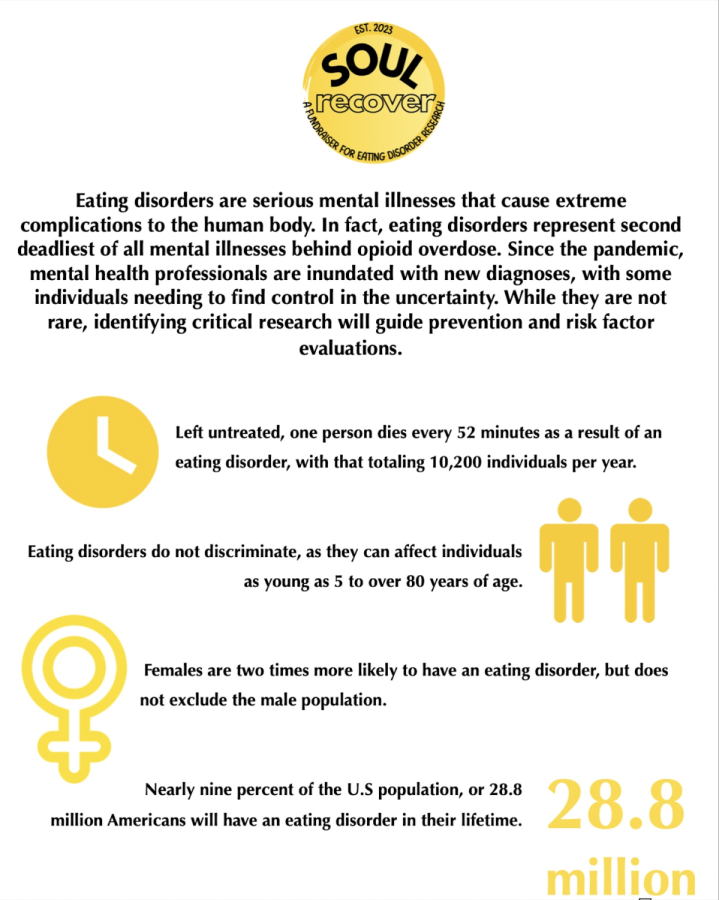Column: Eating Disorders don’t discriminate
Nearly 28.8 million Americans suffer from an eating disorder in their lifetime.
Nearly 28.8 million Americans suffer from an eating disorder in their lifetime. As the call for help grows more desperate among people struggling with eating disorders, we must step back and identify some factors contributing to the issue. To better understand the situation, we have to ask; what is the difference between eating disorders and disordered eating?
The National Eating Disorders Association (NEDA) identify people who align with non-disordered eating as individuals who mindfully “consume food when hungry and stop when full [and] incorporate variety into their diet.”
Despite this, altering or manipulating food intake can lead to the risk of disordered eating, which can later lead to an eating disorder. Eating disorders are severe psychological conditions affecting an individual’s relationship with food, including profound changes to normal day-to-day functioning.
Which brings us to the question; How are high school students affected by eating disorders?
For the majority in this day and age, diet, culture, and the use of social media vastly affects the perception an individual gains of others, distorted or not. While eating disorders can affect everyone and do not discriminate, in particular, high school students identify with several risk factors that lead to the development of eating disorders. According to the NEDA, risk factors include biological, psychological, and sociocultural factors. Some examples include a history of dieting, perfectionism, body image, and dissatisfaction. Other sociocultural factors include weight stigma and bullying. A study by a team at the University of Wisconsin School of Medicine and Public Health reported that “among female high school athletes in aesthetic sports, 41.5% reported disordered eating. These athletes were eight times more likely to incur an injury than athletes in aesthetic sports who did not report disordered eating.” High school students face pressure amidst the social standards and influence of others while trying to fit in; some may go to extreme measures to be accepted.
As infants, we grow up to reflect and learn from the environment around us in order to survive. So, how do these factors impact us in a society where diet culture, social media, and bullying are everywhere?
While there is no right answer, we must speak up against diet culture and provide a safe space for struggling people. Since the start of the pandemic, the NEDA Helpline has experienced a 107% increase in contacts. The time to reach out for help is now.
For more information, visit https://www.nationaleatingdisorders.org


